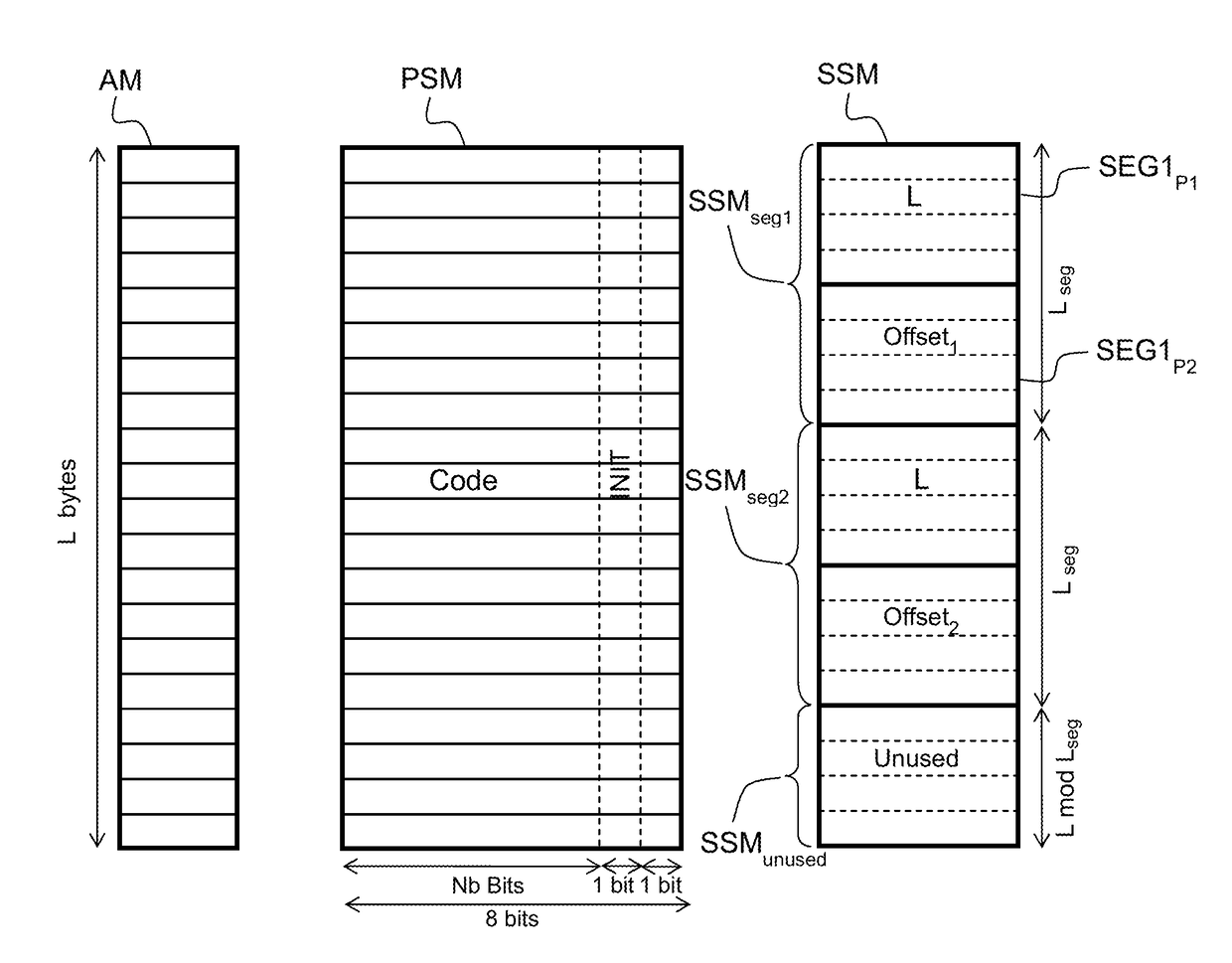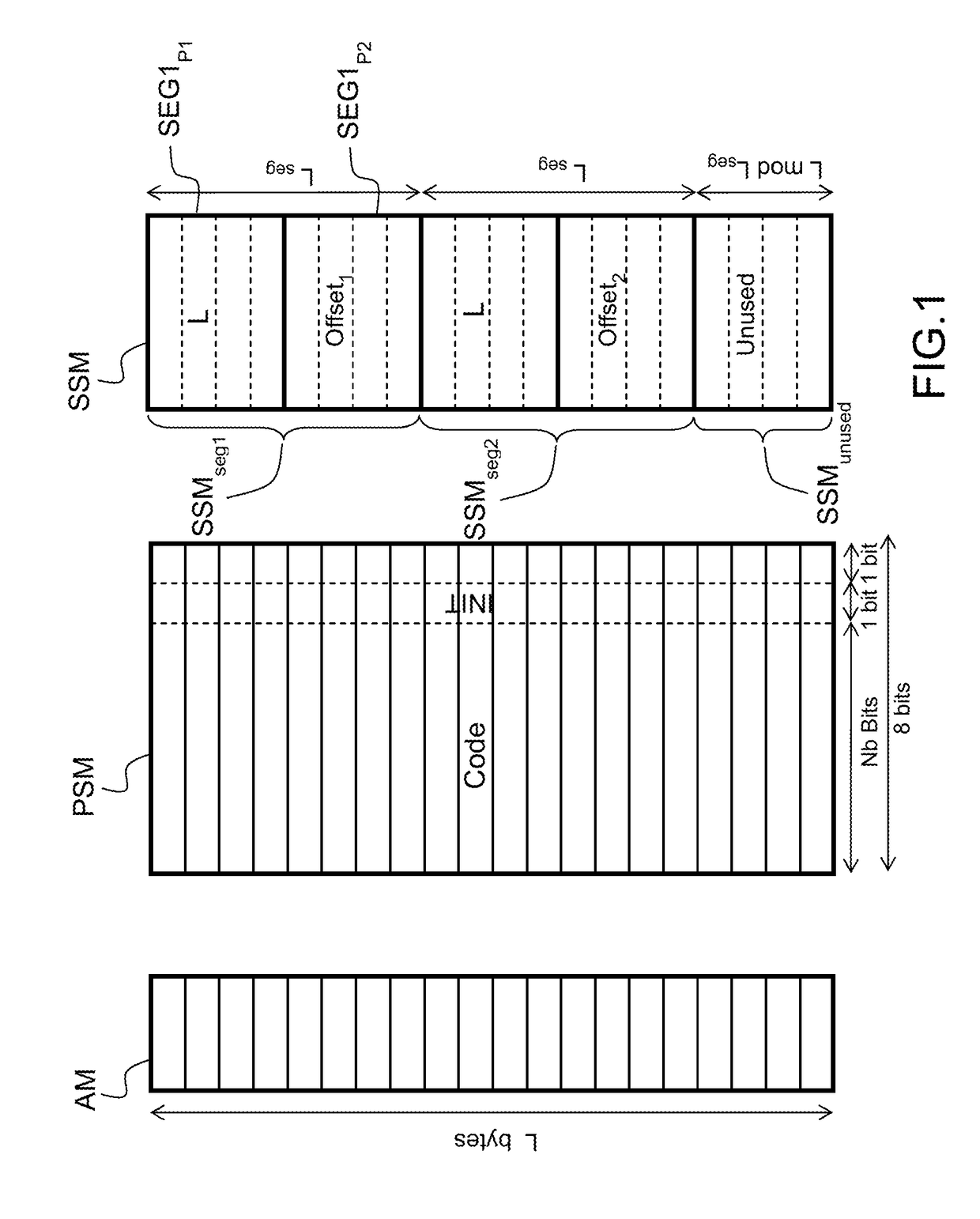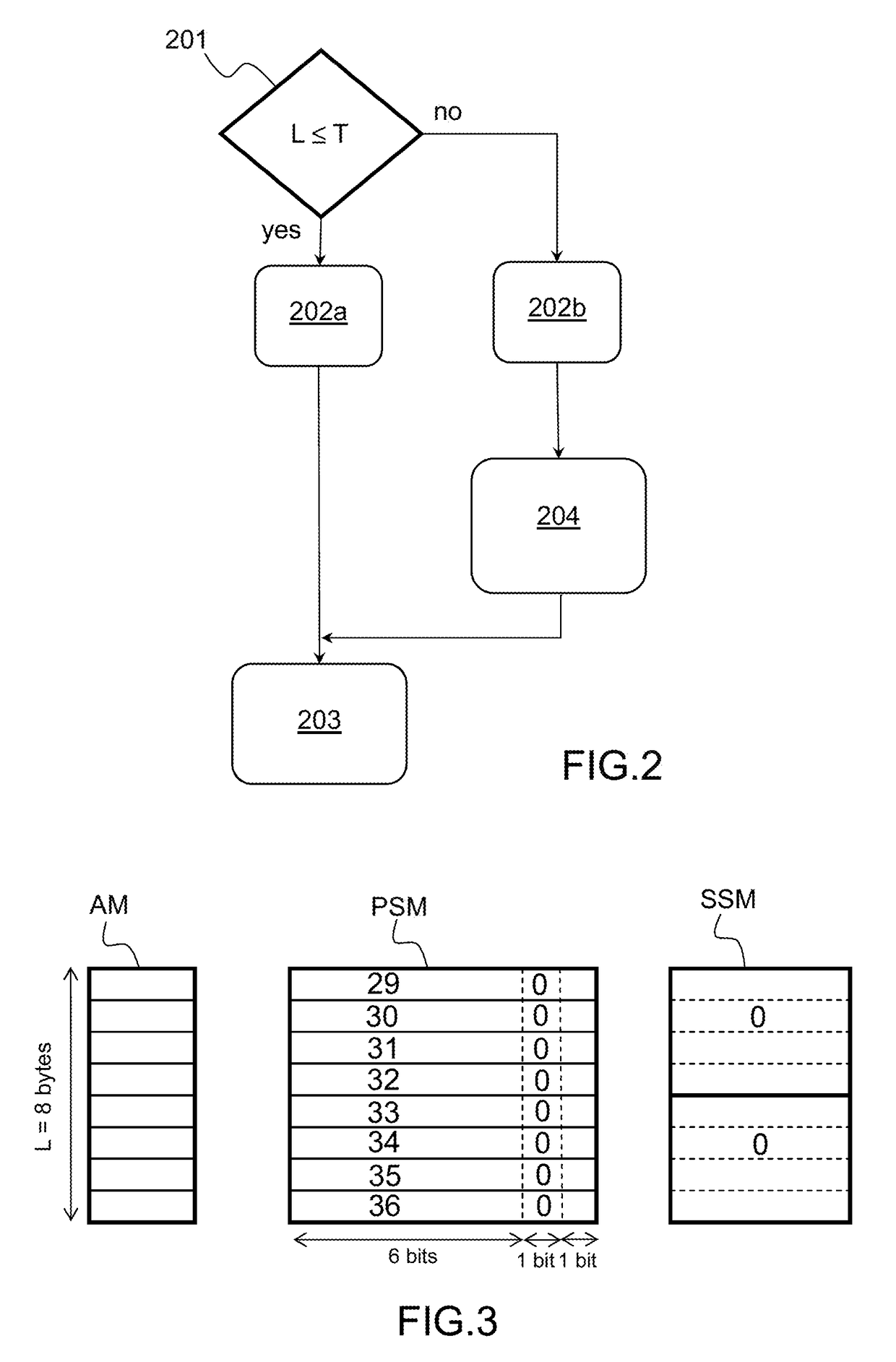Computer-implemented method and a system for encoding a stack application memory state using shadow memory
a computer implementation and stack application technology, applied in the field of runtime analysis of stack application memory state, can solve the problems of compromising security, methods are limited in their capacity to identify properties with respect to memory blocks, and existing tools using shadow memory do not capture enough metadata to identify the bounds
- Summary
- Abstract
- Description
- Claims
- Application Information
AI Technical Summary
Benefits of technology
Problems solved by technology
Method used
Image
Examples
Embodiment Construction
[0076]The method according to the invention applies to computer programs that manage memory through automatic allocation in a virtual memory space of a computer process, where random access memory is represented by a contiguous array of memory cells with byte-level addressing.
[0077]The following paragraphs give general definitions of terms and concepts that will be referred to throughout the description.
[0078]A virtual memory space of a computer process is linear and segmented, consisting of text, stack, heap and potentially other segments. The order of the segments is unspecified, however each segment is represented by a contiguous memory region disjoint with any other segment.
[0079]At runtime a program allocates memory in units referred to as memory blocks. A memory block is a contiguous memory region described by its start and end addresses. The start address of a memory block, also referred to as its base address, is less than or equal to its end address. The length of the memor...
PUM
 Login to View More
Login to View More Abstract
Description
Claims
Application Information
 Login to View More
Login to View More - R&D
- Intellectual Property
- Life Sciences
- Materials
- Tech Scout
- Unparalleled Data Quality
- Higher Quality Content
- 60% Fewer Hallucinations
Browse by: Latest US Patents, China's latest patents, Technical Efficacy Thesaurus, Application Domain, Technology Topic, Popular Technical Reports.
© 2025 PatSnap. All rights reserved.Legal|Privacy policy|Modern Slavery Act Transparency Statement|Sitemap|About US| Contact US: help@patsnap.com



